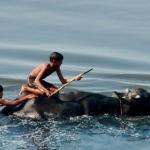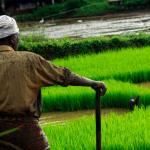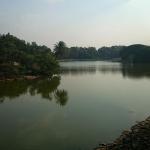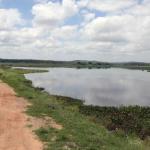ATREE News

The Power of Good
ATREE has been supported by the Rohini Nilekani Philanthropies immensely over the years and we are proud that she has been chosen as the Best Grassroots Philanthropist in the Forbes Leadership Awards 2021-22. “Indian philanthropists need to become bolder, lead with trust, and look for new areas to fund,” Rohini says. “There are a thousand things that need philanthropic capital to come into.”

Friend or foe? The way bats disperse seeds benefit farmers: Study
Fruit bats are perceived to be more beneficial than harmful as new study finds that areas where perceptions of benefits from bats were high were areas with lower likelihood of zoonotic risk. People tracked bat-dispersed seeds and collected them for use, realising significant economic value from the process. Overall, fruit bats were perceived to be more beneficial due to clumped seed dispersal of commercially important crops such as cashew and areca, than harmful due to damage or loss to pulpy fruits like banana or guava.

India proposes river rejuvenation through plantations
The government of India has recently released a river rejuvenation programme worth Rs. 193 billion through a massive focus on plantation activities. The plan, however, is criticised by experts who note that it is nothing but old wine in a new bottle focusing on plantations without understanding and addressing the real issues behind the degradation of the rivers. Sharachchandra Lele said that the “plan in this document is mostly about planting trees in catchment areas, along river banks and along farm boundaries, some lantana removal from degraded forests, and a small component of soil and conservation measures.”

World Water Day: Rural Water Planning is Caught Between an Egg Carton and a Bathtub
Aquifers are underground water bearing layers of rock or sediments that store water, they hold what is referred to as groundwater. Aquifers behave differently in different regions. Hard-rock aquifers of peninsular India tend to behave like egg cartons. They are fast responding and local. They quickly empty in the dry season if local rains have been deficient but also fill up in wet years. The massive alluvial aquifers in the Indo-Gangetic plain behave like a massive bathtub. These systems don’t respond much to local rainfall. If pumping exceeds recharge, these aquifers gradually get drawn down over decades like a bathtub that’s leaking faster than the tap filling it.

Study identifies potential areas for discovering new plant species in Indian grasslands
Grasslands have been grossly ignored on the assumption that since they were formed by artificial degradation of forests, they may only have some already known species, and nothing new could be expected from them. However, studies in recent times have found this assumption to be misplaced.

The Dog-matrix
According to a study by the Veterinary College, Bengaluru and ATREE, around 50% of the vaccinated street dogs in the city have adequate rabies antibody titre in their blood.
“Our result implies that a big proportion of the total dog population in the city is still not protected against rabies. However, it is difficult to deduce this number as there are many lacunae. Neither we know the total dog population in the city, nor are we aware of the percentage of the total population that has received the rabies vaccine,” Abi Vanak.

Crowdmapping Bengaluru's Vanishing Lakes
How many lakes do you think there are in Bengaluru? One hundred? Five hundred? A thousand? Researchers from ATREE found a number of issues: many lakes’ locations were marked wrongly, many were missing, while some in the list had been encroached upon or had dried up. With the help of citizen volunteers, the CSEI collated lake data from different sources to identify 1,350 lakes spread across Bengaluru – 777 lakes in Bengaluru Urban and 573 in Bengaluru Rural. Read more:

How many lakes does Bengaluru really have? A crowdsourcing initiative is finding out
How many lakes do you think there are in Bengaluru? One hundred? Five hundred? A thousand? Researchers from ATREE found a number of issues: many lakes’ locations were marked wrongly, many were missing, while some in the list had been encroached upon or had dried up. With the help of citizen volunteers, the CSEI collated lake data from different sources to identify 1,350 lakes spread across Bengaluru – 777 lakes in Bengaluru Urban and 573 in Bengaluru Rural. Read more:

Can Vrishabhavathi be Bengaluru's Thames?
Why can't Bengaluru learn from the transformation of the Thames from being a stinking drain to a tourist destination? "Vrishabhavathi can indeed become the Thames of Bengaluru. But the challenge is bringing together different (government) departments. The BWSSB handles the treatment plants, the BBMP is in charge of drains and the lakes are split between different agncies. The coming together of these agencies is crucial for such works."- Dr Veena Srinivasan

Wildlife Trade: A Threat To Public Health
In 2021, scientists from ‘The Nature Conservancy and the Ashoka Trust for Research in Ecology and Environment’ (ATREE) in India, launched an investigation into the subject. The study revealed that one-quarter of mammal species in the wildlife trade host 75 percent of the known zoonotic viruses. The researchers, therefore, concluded that the risk of disease transfer is much higher among those mammals commonly traded, as opposed to species that are not traded or are domesticated.